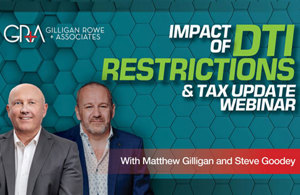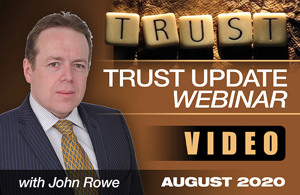
In big news for property investors, on 30 April 2020 the Reserve Bank (RBNZ) confirmed that they were removing the loan-to-value restrictions that had been in place in one form or another since October 2013.
Back then, the RBNZ decided to introduce different tools rather than just using interest rates (through the official cash rate) to have some control over the property market. Initially the rules mostly hit the first home buyer market with the main restrictions being on lending where there was less than a 20% deposit. However, in 2015 a regional restriction was imposed on Auckland residential investment property, requiring investors to provide a 30% deposit. Then 2016 this was increased to 40% deposit, implemented nationally. As a result, many property investors found their ability to continue to grow their portfolios stifled by the reduction in leverage.
We saw relaxing in regards to these rules at the start of 2018 and 2019 as the investment deposit requirements were reduced back to 30% and the amount of lending that the banks could do in the above 80% space increased. This translated to seeing an increase of first home buyers entering the market in the six months prior to the Covid-19 lockdown, with some banks allowing strong candidates funding back at 95% levels.
What will the banks do?
While the banks can, in theory, now make their own decisions regarding what level that want to go to, we won’t be seeing a return to the times prior to the Global Financial Crisis where banks routinely were doing a lot of lending with either no deposit or requiring just 5%. This is more likely to be a return to when the first restrictions were implemented back in 2013. This will benefit investors, as banks are probably more likely to favour going to 80% in the investor market where economists are predicting an initial 5-10% price drop, rather than the more highly leveraged first home buyer market.
Kiwibank was the first to announce rule changes and have already confirmed that they will look at 80% investment lending, although no higher. They have also stated they have no appetite for doing any lending above 90% (except for the First Home Loan product through Crown agency Kainga Ora).
We wait to see what other lenders will do. However, I expect that there may be certain locations or property types that may not see much of a change in regard to the lending criteria that currently apply. Tourist destinations such as Queenstown and Rotorua may initially not experience the same lending appetite from banks that the main cities do. And with a large amount of new build apartments that had been due for completion in Auckland’s city centre, I wouldn’t expect to see lenders reduce the deposits required here too much either.
The elephant in the room for many looking to borrow further will remain the banks’ loan affordability constraints, with the actual rates that lenders are using to assess borrowing more than double most mortgage rates.
Until these relax, many potential borrowers will be sitting on the side-line.
What should property investors do?
For investors who can borrow, we recommend considering the following:
1. Split banks
If you have your personal residence at the same lender as your investment properties, there may be an opportunity to increase how much you can borrow. Let’s illustrate with an example.
Say you have your home and an investment property with Bank A. Both properties are worth $1m and have debt of $500k each.
| Lender | Bank A | Bank A |
| Value | $1m | $1m |
| Debt | $500k | $500k |
Bank A’s rules are such that you can borrow up to 80% on your home. i.e. $800k.
Although the LVR rules have been removed, Bank A is still only allowing 70% leverage on investment properties, which means you could borrow up to $700k over the rental.
Therefore, you have a potential total borrowing capacity with Bank A of $500k that you could use as a deposit to buy another property ($300K extra on the family home, and $200k extra over the rental property).
Bank B, however, has different lending criteria, and is allowing investors to borrow up to 80%. So, if you restructure and move your rental property to Bank B with its more relaxed LVR rules, you can increase the debt on the investment property to $800K. (i.e. an extra $300k).
You would then use that extra $300k to reduce the debt on your family home down to $200k, keeping your total borrowing the same at $1m. (An added advantage of doing this is increased tax efficiency because interest on debt over an investment property is tax deductible, whereas interest on debt over a personal home is not.)
Now your position with the relaxed LVRs looks as follows:
| Lender | Bank A | Bank B |
| Value | $1m | $1m |
| Debt | $200k | $800k |
Because you have split your debt, Bank A does not take into consideration the investment property with Bank B when deciding how much they will lend. Therefore, Bank A’s 70% LVR criteria for investment property lending is irrelevant, and you can borrow the full 80% over your family home.
The result is that you have an extra $300k of equity in the family home. If you wish to leverage up to 80% at some stage, you end up being able to borrow a total of $600k, i.e. $100k more than if you had both properties at the same bank. Even if LVR restrictions are re-introduced for rental properties, you should still be able to obtain 80% lending over your personal home.
2. Reduce securities
If you have a number of properties with the same lender, the higher LVR levels may mean it is possible to have one of the securities held by that lender released. In recent times, banks have started to qualify a client’s position when discharging a security (i.e. when the borrower sells a property), in some cases resulting in the lender taking all net sales proceeds and applying these to residual debt. By releasing a security from a lender’s clutches now, it means that if you need to sell, you get access to full proceeds rather than the lender having control of these funds.
3. Move from non-bank lenders
If you have higher LVR non-bank lending in place, it is worth reviewing your options to see if you can get back to a bank and lock in the cheap interest rates currently available.
4. Get advice from a mortgage broker
Talk to a mortgage adviser over upcoming months, as there may be differences in what criteria banks apply. When the RBNZ has allowed the banks to relax certain rules in the past, some banks have not implemented the changes.
We await with interest further policy changes over the next few weeks from other lenders but if you’d like to discuss further please touch base by filling out the form here.

Kris Pedersen
Managing Director at Kris Pedersen Mortgages
Did you like this article? Subscribe to our newsletter to receive tips, updates and useful information to help you protect your assets and grow your net worth. We're expert accountants providing expert advice to clients in NZ and around the world.
Disclaimer: This article is intended to provide only a summary of the issues associated with the topics covered. It does not purport to be comprehensive nor to provide specific advice. No person should act in reliance on any statement contained within this article without first obtaining specific professional advice. If you require any further information or advice on any matter covered within this article, please contact the author.
Comments
Testimonials
Thank you for your very helpful and friendly email, voice and txt reminders. They keep us all on track. Well done, great service. This very much helps underpin what GRA are doing & stand for and rounds out the professionalism I have observed throughout the company. Excellent-impressive organisation. - John P
Gilligan Rowe and Associates is a chartered accounting firm specialising in property, asset planning, legal structures, taxation and compliance.
We help new, small and medium property investors become long-term successful investors through our education programmes and property portfolio planning advice. With our deep knowledge and experience, we have assisted hundreds of clients build wealth through property investment.
Learn More








































